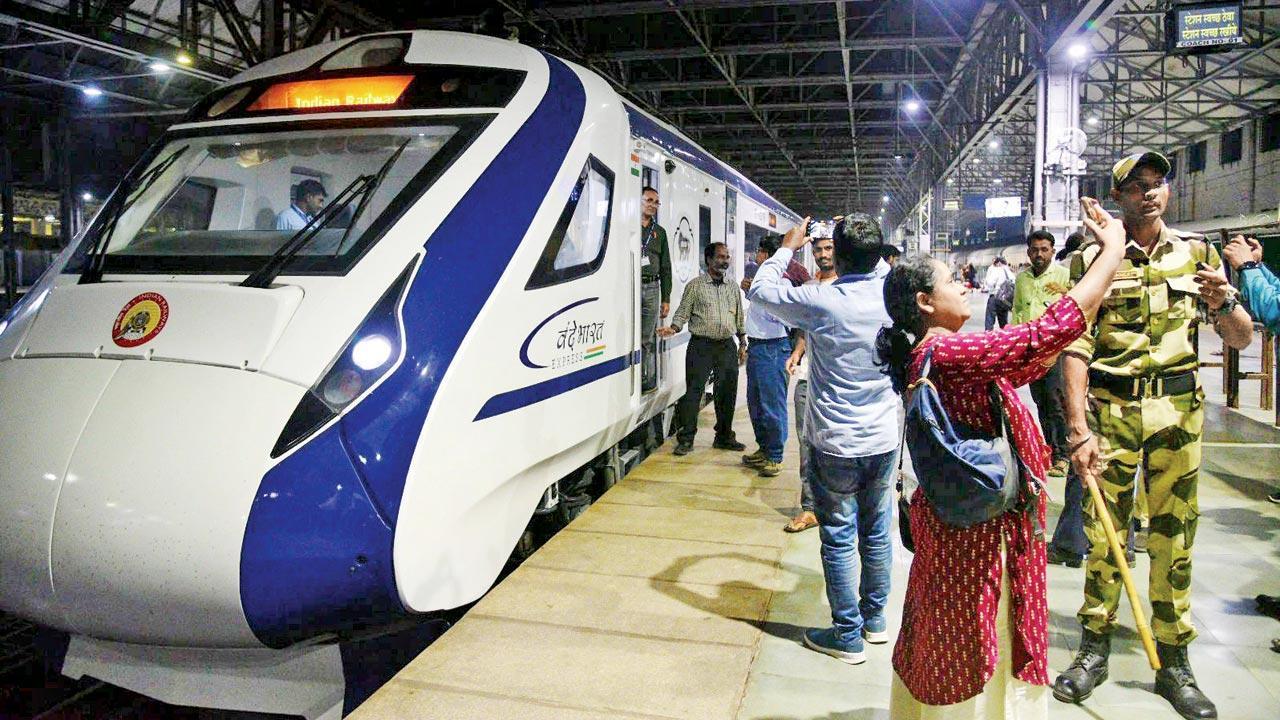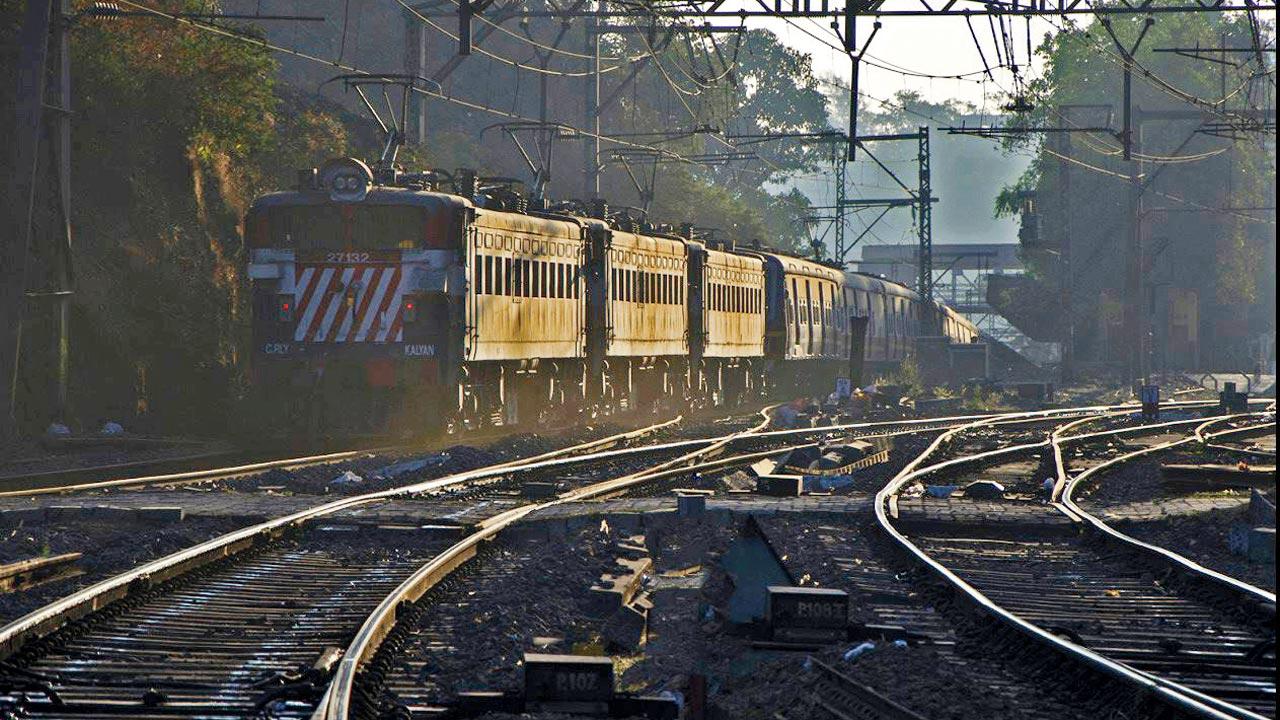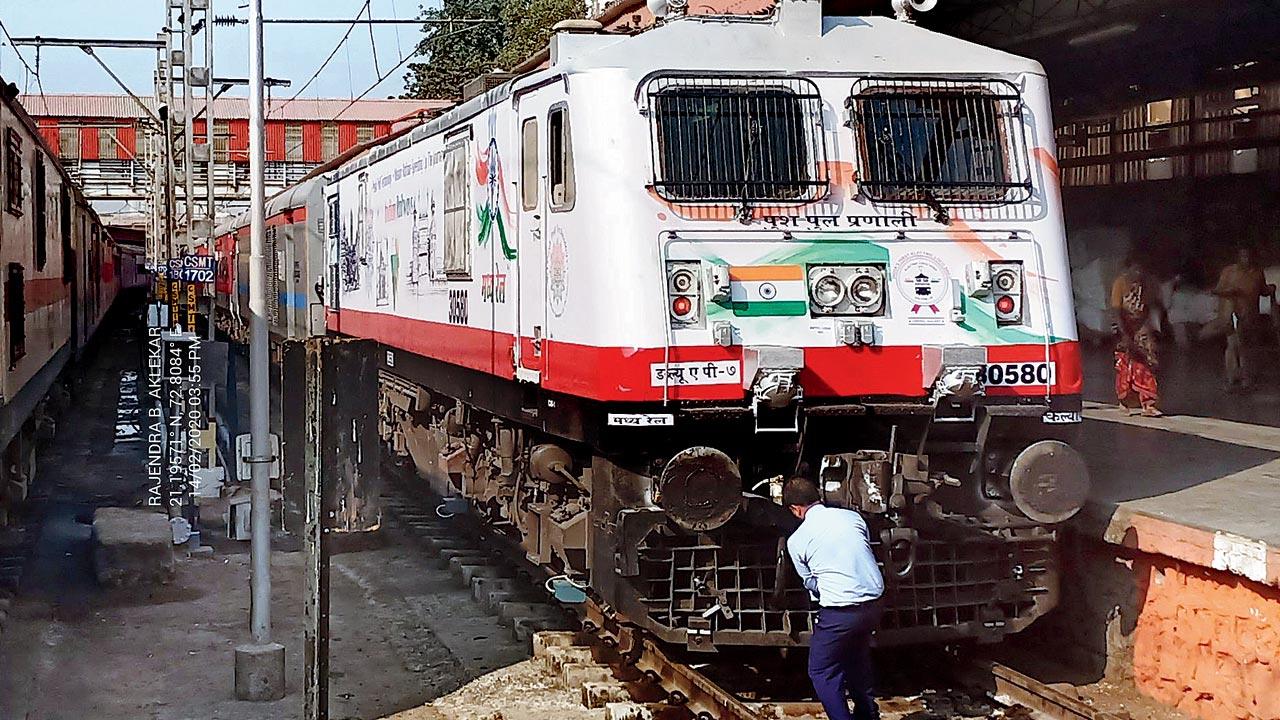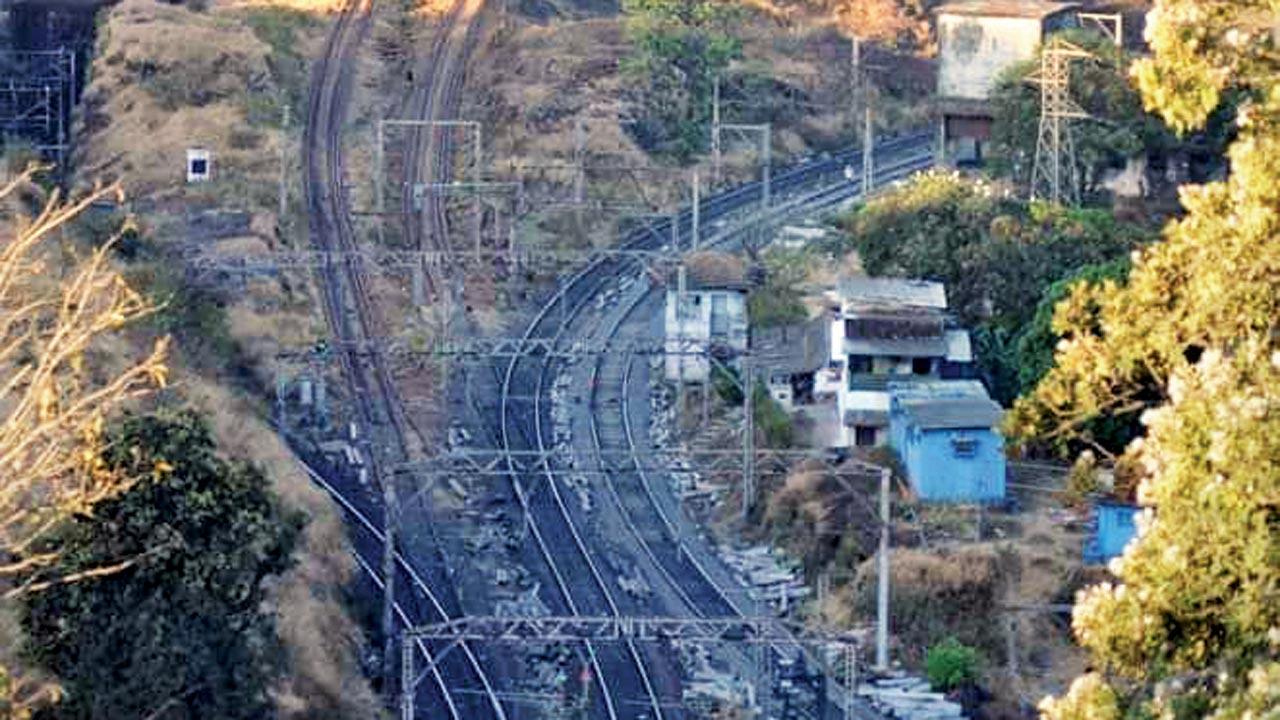For the first time in 150 years, a train scales India’s steepest inclines at Khandala and Igatpuri on its own steam; here is a detailed account of how engineers achieved the feat

A Vande Bharat Express train arrives at CSMT on Thursday. Pic/Pradeep Dhivar
The Indian Railways achieved a major feat, which was not even thought of in the past 150 years, on Thursday with engineless trains negotiating the steepest railway track inclines in the country at Khandala and Igatpuri on their own, without any support. This feat was achieved with Vande Bharat Express—a self-powered electric train set. The train descended the Ghats on its way to Mumbai on Thursday evening. The prime minister is set to flag off twin Vande Bharat trains from Chhatrapati Shivaji Maharaj Terminus in Mumbai to Solapur and Shirdi on February 10. Currently, all trains that pass through the ghat stretch at Bhor and Thal Ghat halt before the ghat to attach banker locomotives.
Banker locomotives are powered engines which are attached to the back of the train to push it during the uphill climb and to stop it from losing control during the downhill stretch. This is needed as the inclines at Bhor in the Pune direction and Thal Ghat in Nashik direction have a gradient of 1:37, which means there is a 1-metre rise for every 37 metres.
ADVERTISEMENT
 Banker locomotives (three coaches attached at the end of the train) help a train go downhill by keeping it from slipping ahead, as it pulls it from behind
Banker locomotives (three coaches attached at the end of the train) help a train go downhill by keeping it from slipping ahead, as it pulls it from behind
The only existing train that does not halt for the banker locomotive is the CSMT Rajdhani Express. When Central Railway introduced this train in January 2019, it devised its own solution to negotiate the ghat section without external help by attaching an engine at both ends of the train.
Also Read: IN PHOTOS: Vande Bharat Express train reaches Mumbai
A senior official, part of the preparatory team, said that Vande Bharat Express itself is powerful and may not require any assistance to climb the inclines. “What we have devised are parking brakes which are installed as an additional safety feature. These brakes will stop the train from rolling back or slipping ahead when negotiating the climbs. There will be extensive trials of parking brakes in the ghats. The trains will be introduced in passenger service only after the trials,” said the Central Railway official.
 Rajdhani Express has engines attached to both ends to help the train negotiate the ghat section without the help of banker locomotives
Rajdhani Express has engines attached to both ends to help the train negotiate the ghat section without the help of banker locomotives
“Train-18 Vande Bharat Express has 50 per cent powering [every alternate coach has motors] and is well suited to work any gradient in India. It also has a state-of-the-art computer-controlled wheel-mounted disc brake system, which is top-notch worldwide, and therefore best placed to negotiate steep down gradients. It also has a pneumatic parking brake which is integrated with the brake calliper. This train would not need any banker in the ghat sections between Mumbai and Igatpuri and Mumbai and Pune,” said Sudhanshu Mani, the creator of India’s first semi-high speed train set Train-18 Vande Bharat Express and retired general manager of the Indian Railways’ biggest coach factory—Integral Coach Factory (ICF), in Chennai.
The trains are currently being transported from ICF to Mumbai, and will be readied before February 10.
 The steep railway tracks at Bhor Ghat section
The steep railway tracks at Bhor Ghat section
The Vande Bharat Express between Mumbai and Solapur is to run via the Bhor ghat section and is expected to cover a distance of around 400 km between the two townships in 6.35 hours. The Mumbai-Shirdi one is expected to run via Thal Ghat and cover a distance of around 340 km in 5.25 hours.
Construction of the lines
The Bhor and Thal Ghat sections of the railway was built by the Great Indian Peninsula Railway, now called Central Railway. The Kalyan line was extended to Khopoli via Palasdhari on May 12, 1856 and the Khandala-Pune section was opened to traffic on June 14, 1858. The Palasdhari-Khandala section that involved the difficult crossing of the Bhor Ghat took another five years for completion. The Kasara line was opened on January 1, 1861 and the steep Thal Ghat section up to Igatpuri was opened on January 1, 1865.
Feb 10
Day PM will flag off two Vande Bharat trains from city
 Subscribe today by clicking the link and stay updated with the latest news!" Click here!
Subscribe today by clicking the link and stay updated with the latest news!" Click here!








